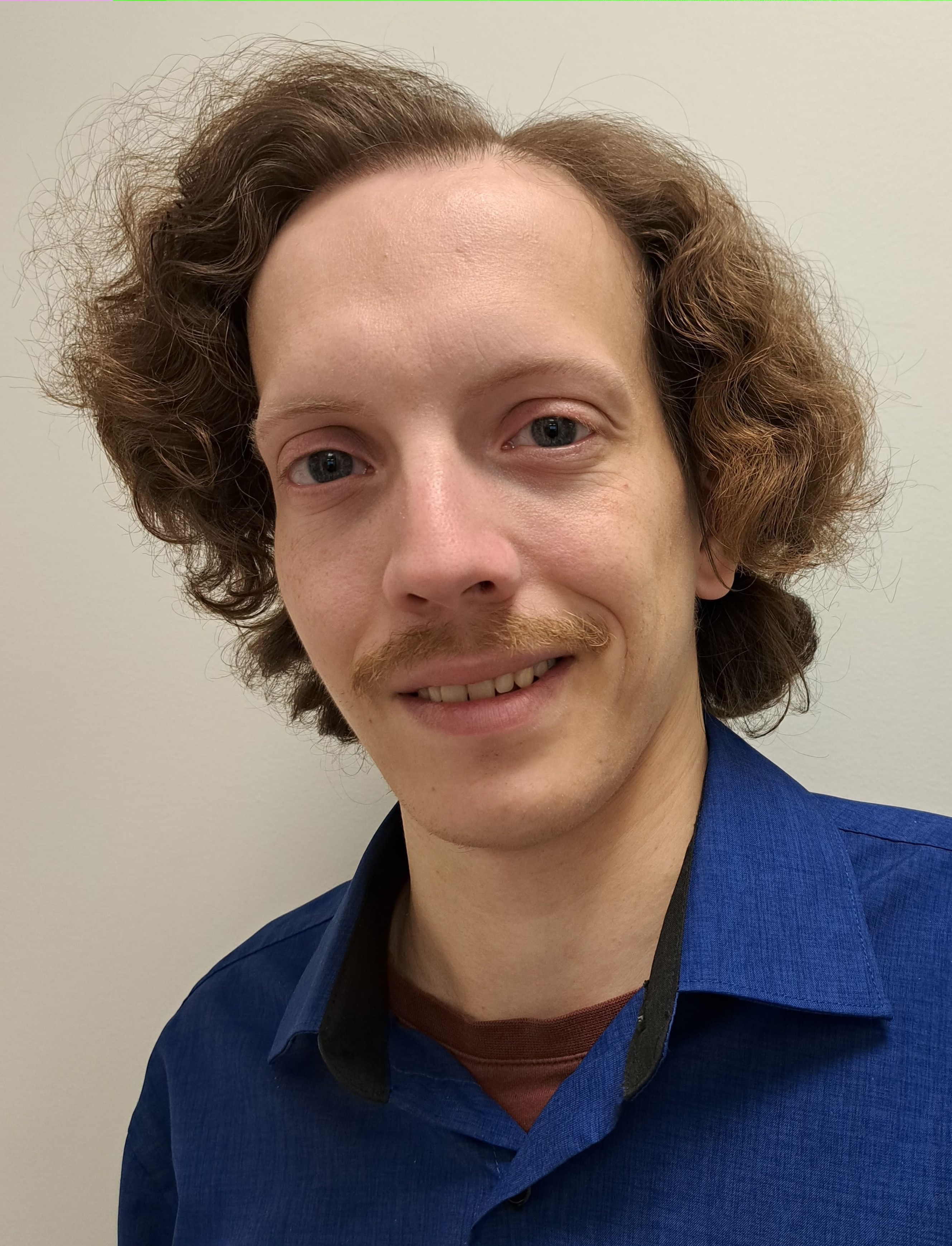Our Early Career Researcher Award (formerly the IAG Young Scientist Award) is made annually to scientists in the early years of their profession for research that closely reflects the goals of our Association. The award aims to promote the careers of researchers who have either developed innovative analytical methods or provided new strategies to improve data quality as applied to the chemical analysis of geological or environmental materials. The award consists of a cash prize of $1000 US, plus registration and abstract fees for the next Goldschmidt conference.
We are proud to announce that the winners of the 2024 Award are Birk Härtel (University of Calgary, Canada) and Shiqiang Huang (Colorado School of Mines, USA). They will be presenting their research at the 2024 Goldschmidt conference 18-23 August to be held in Chicago, USA. During the conference they will also be receiving their IAG awards.
 Shiqiang Huang manages the LA-ICP-MS/MS lab at Colorado School of Mines (CSM), USA, specialising in LA-ICP-MS (single and triple quadrupole) techniques and their applications in economic geology. During his PhD (2019-2022) at CSM, Shiqiang focused on in situ Rb-Sr dating of micas1 and the influence of organic matter on the Re-Os dating of pyrite2. After completing his PhD, he has been engaged in the U-Pb dating of zircon, garnet, and cassiterite, plus trace element analysis and mapping of various minerals and glasses. In addition, he has started to improve the U-Pb dating method for wolframite and scheelite. He is also working on the magma fertility indicators of the Las Bambas deposit, Peru, which involves extensive LA-ICP-MS analysis. In his spare time, Shiqiang enjoys outdoor sports including hiking, camping, skiing, mountain biking and rock climbing.
Shiqiang Huang manages the LA-ICP-MS/MS lab at Colorado School of Mines (CSM), USA, specialising in LA-ICP-MS (single and triple quadrupole) techniques and their applications in economic geology. During his PhD (2019-2022) at CSM, Shiqiang focused on in situ Rb-Sr dating of micas1 and the influence of organic matter on the Re-Os dating of pyrite2. After completing his PhD, he has been engaged in the U-Pb dating of zircon, garnet, and cassiterite, plus trace element analysis and mapping of various minerals and glasses. In addition, he has started to improve the U-Pb dating method for wolframite and scheelite. He is also working on the magma fertility indicators of the Las Bambas deposit, Peru, which involves extensive LA-ICP-MS analysis. In his spare time, Shiqiang enjoys outdoor sports including hiking, camping, skiing, mountain biking and rock climbing.
1Huang, S., Chang, Z., Liu, K., and Garbe‐Schönberg, D., 2023, Optimisation of LA‐ICP‐MS/MS Rb‐Sr dating of micas with non‐matrix‐matched reference materials: Geostandards Geoanalytical Research, v. 47, p. 725-747.
2Huang, S., Song, Y., Zhou, L., Leach, D. L., Chang, Z., and Hou, Z., 2022, Influence of organic matter on Re-Os dating of sulfides: insights from the giant Jinding sediment-hosted Zn-Pb deposit, China: Economic Geology, v. 117, p. 737-745.
 Birk Härtel is a postdoctoral researcher at the Department of Earth, Energy and Environment at the University of Calgary (Canada). His research focuses on method development and data analysis in low-temperature thermochronology. He received his PhD degree at Freiberg University of Mining and Technology (Germany), where he worked on the development of α-radiation-damage-based dating of zircon.
Birk Härtel is a postdoctoral researcher at the Department of Earth, Energy and Environment at the University of Calgary (Canada). His research focuses on method development and data analysis in low-temperature thermochronology. He received his PhD degree at Freiberg University of Mining and Technology (Germany), where he worked on the development of α-radiation-damage-based dating of zircon.
He established a new calibration for radiation-damage measurements on zircon with Raman microprobe that takes into account the damage sensitivity of different Raman bands1. He also studied the kinetics of radiation-damage annealing and defined closure temperatures for the lattice repair recorded by different parts of the Raman spectrum2. In addition, Birk developed new protocols for age calculation and data evaluation for zircon-Raman and other thermochronometers, and suggested a new reference material for (U-Th)/He analysis3,4,5,6. His work on zircon-Raman dating has sparked further interest on studying the thermal history of rocks in the middle and upper crust using radiation damage, whereas his contributions to data analysis have provided new perspectives on thermochronological ages in general. Currently, Birk is developing a triple-dating approach to combine zircon-Raman dating with in-situ (U-Th)/He and U-Pb dating by LA-ICP-MS. When Birk is not working, you can probably find him with his nose in a book.
1Härtel, B., Jonckheere, R., Wauschkuhn, B., Hofmann, M., Frölich, S., and Ratschbacher, L., 2021a. Zircon Raman dating: Age equation and calibration. Chem. Geol. 579, 120351, doi: 10.1016/j.chemgeo.2021.120351.
2Härtel, B., Jonckheere, R., Wauschkuhn, B., and Ratschbacher, L., 2021b. The closure temperature(s) of zircon Raman dating. Geochronology 3, 259-272, doi: 10.5194/gchron-3-259-2021.
3Härtel, B., Jonckheere, R., and Ratschbacher, L., 2022a. Multi-band Raman analysis of radiation damage in zircon for thermochronology: Partial annealing and mixed signals. Geochem. Geophys. Geosys. 23, e2021GC010182, doi: 10.1029/2021GC010182.
4Härtel, B., Jonckheere, R., Krause, J., and Ratschbacher, L., 2022b. Spurious age-eU associations in thermochronology. Earth Planet. Sci. Lett. 117870, doi: 10.1016/j.epsl.2022.117870.
5Härtel, B., 2023. Incaplot (Isochron calculation and plotting) (1.36). Zenodo, doi: 10.5281/zenodo.8233942
6Härtel, B., Matthews, W.A., and Enkelmann, E., 2023. Duluth Complex FC1 apatite and zircon: reference materials for (U-Th)/He dating? Geostand. Geoanal. Res., 12492, doi: 10.1111/ggr.12492.
Previous winners of the IAG Young Scientist Award 2017 – 2023
Winners of the IAG Early Career Researcher Award 2006 – 2014
2014 – Corey Wall
2013 – Satoki Okabayashi
2012 – Marcela Camargo
2011 – Leah Morgan
2010 – Regina Mertz-Kraus
2009 – Adrien Maestrot
2008 – Alon Amrani
2007 – Jérôme Chmeleff
2006 – Malka Machlus
